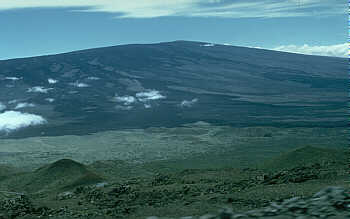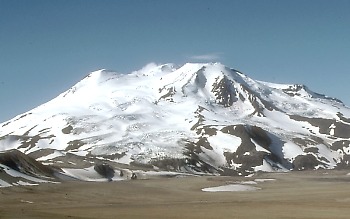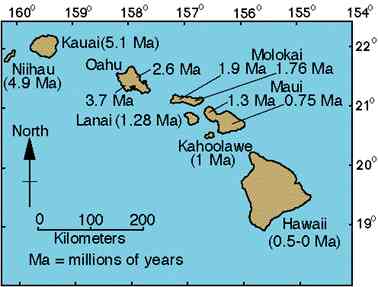16.5: Review and Additional Resources
- Page ID
- 16629
Review
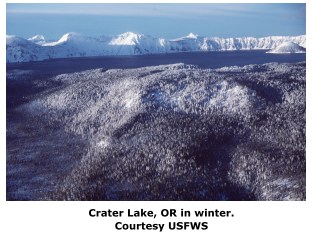
Review and assess your learning. Start with the "Important Terms and Concepts" to ensure you know the terminology related to the topic of the chapter and concepts discussed. Move on to the "Review Questions" to answer critical thinking questions about concepts and processes discussed in the chapter. Finally, test your overall understanding by taking the "Self-assessment quiz".
-
- volcano
- an opening in the surface of the Earth from which magma and associated gases and ash erupt; also, the form or structure, sometimes conical, that is produced by the ejected material.
-
- central vent
- The main conduit through which magma moves toward the surface
-
- crater
- sits at the top of a volcano and is the location where much of the lava, gas, rock fragments and ash are ejected from
-
- caldera
- massive craters created when pressure builds inside the volcano until the top is literally blown off, magma drains back into the central vent and the top of the cone collapses in
-
- magma chamber
- a huge, subterranean caldron of molten rock that is less dense than the surrounding rock and rises to the surface
-
- lava
- molten rock above the surface
-
- lateral vent
- found on the sides of some volcanoes where lava is extruded
-
- pyroclastic flow
- fast-moving gas and fragments of rock having temperatures of 500 oC rushing down the flanks of a volcano at speeds reaching 100 km/hr, carbonizing all in their path.
-
- hot spot
- places where a chamber of magma has accumulated at depth beneath the surface
-
- midocean Ridge
- oceanic plates are diverging and magma spreads across the ocean floor, ultimately being exposed at the surface
-
- effusive eruption
- those that create vast lava flows of low viscosity, fluid lava. Magma associated with effusive-type eruptions is relatively low in silica and thus "easily" flows up the vent and spreads across the surface
-
- shield volcano
- a product of effusive eruptions; as the fluid lava flows out onto the surface, it spreads out and cools into a broad, low-angled slope.
-
- Pahoehoe lava
- has a glistening, ropy like appearance as it moves and cools
-
- AA lava
- more pasty than pahoehoe and forms a sharp, clinkery, rough surface
-
- explosive eruption
- common to volcanoes with very viscous lava and high amounts of gas under pressure. Magma is high in silica, thus more viscous
-
- cinder cone
- primarily composed of layers of pyroclastic material built from rock fragments once lodged in the central vent of the volcano
-
- composite (Stratovolcano)
- produce explosive eruptions; form from alternating eruptions dominated by pyroclastics or lava; display layers of alternating flows
-
- lahar
- Mudflows or debris flows resulting from when hot pyroclastic material melts snowpacks, or fresh pyroclastic deposits are mobilized by heavy rains
-
- Nuees Ardentees
- noxious gases and fine particulate matter; aka "glowing clouds or avalanches"
Compare and contrast shield, composite, and cinder cone volcanoes.
- Answer
-
Shield volcanoes have broad, low-angled slopes and built layer on layer of fluid lava. Composite volcanoes are steep-sided cones built from alternating flows of lava and pyroclastics. Cinder cones are smaller cones built primarily from explosive eruptions of pyroclastics.
Where do volcanoes occur?
- Answer
-
In subduction zones, along the midocean ridge, and over hot spots.
What is the basic difference between eruptions from shield and composite volcanoes?
- Answer
-
Eruptions from shield volcanoes tend to be dominated by effusive eruptions of fluid lava. Composite volcanoes produces explosive eruptions from stickier magma.
What is a lahar?
- Answer
-
Mudflows called lahars are caused by the rapid melting and runoff of snow mixing with ash and soil.
What is a pyroclastic flow?
- Answer
-
Hot ash, pumice, rock fragments and noxious gas that moves rapidly down the side of a volcano.
What are the principal gases emitted by a volcano?
- Answer
-
The most common gas released by magma is steam (H2O), followed by CO2 (carbon dioxide), SO2 (sulfur dioxide), (HCl) hydrogen chloride and other compounds.
How do calderas form?
- Answer
-
By the volcano blowing the summit off or magma draining from the central vent removing support for the summit causing it to collapse in.
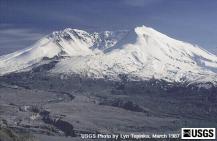
Mt. Saint Helens, Courtesy USGS
Explain how the Hawaiian Islands formed.
- Answer
-
The Hawaiian islands were formed by volcanic activity over a hot spot. The youngest island in the chain lies toward the southeast as the Pacific Plate moves toward the northwest.
How was the Columbia Plateau formed?
- Answer
-
A flood basalt of 170,000 cubic kilometers known as the Columbia River basalts covered a large portion of southeastern Washington, eastern Oregon and southern Idaho creating the plateau.
What is a volcanic neck?
- Answer
-
A volcanic neck is the "mold" of the central vent. Magma stuck in the central vent cools. Removal of the overlying rock exposes the plug-like shape within. Shiprock, NM (below) is a notable example of a volcanic neck.

- Volcanoes are found
- along the midocean ridge
- near subduction zones
- hot spots (mantle plumes)
- all of the above
- A volcano built by alternating flows of lava and accumulation of pyroclastics is called
- a shield volcano
- a cinder cones
- a composite volcano (stratovolcano)
- any of the above
- A caldera
- is a lateral vent on the side of a volcano
- a huge crater at the top of the volcano
- a tube where lava pours into the ocean
- none of the above
- The oldest island in the Hawaiian chain is located towards the ______ end of the chain.
- northwest
- northeast
- southwest
- southeast
- The volcanoes that comprise the Hawaiian Islands are
- shield volcanoes
- composite volcanoes
- cinder cones
- none of the above
- Shield volcanoes
- are associated with effusive eruptions
- have very steep sides
- mostly emit pyroclastic material from their central vent
- are associated with all the above
- ______ are mudflows due to rapid melting of snow packs along the sides of snow covered mountains.
- Pyroclastic avalanche
- Pahoehoe
- AA
- Lahars
- Devil's Tower is a
- dike
- lava plateau
- a landing site for alien spacecraft
- volcanic neck
- A lava that has a glistening, ropy-like appearance associated with effusive eruptions is known as
- AA
- Pahoehoe
- Nuees Ardentees
- Pu' u' O'o
- The Columbia River Plateau is was built from
- limestone
- granite
- basalt
- none of the above
- Answer
-
- D
- C
- B
- A
- A
- A
- D
- D
- A
- C
Additional Resources
Focus on The Physical Environment: "Cascades Volcanoes: When Sleeping Giants Wake" (KSPS Public TV)
Physical Geography Today: Weekly Volcanic Activity (Smithsonian & USGS)
Multimedia
Volcanism Earth Revealed (Annenberg/CPB) from the site: "Volcanoes provide clues about what is going on inside Earth. Animations illustrate volcanic processes and how plate boundaries are related to volcanism. The program also surveys the various types of eruptions, craters, cones and vents, lava domes, magma, and volcanic rock. The 1980 eruption of Mount St. Helens serves as one example." Go to the Earth Revealed site and scroll to "Volcanism". One-time, free registration may be required to view film.
"Volcanoes" - Talk of the Nation - Science Friday (NPR) segment from August 2, 1996 explores how and where volcanoes form and how to predict eruptions with geologists from the Cascade Volcano Observatory and others. (RealAudio required)
Underwater Lava "Host Noah Adams talks with Christopher Fox, of the National Oceanic and Atmospheric Administration (NOAA) about underwater equipment that was monitoring a nearby volcano. It got covered with molten lava, but is still working. The instrument records pressure and temperature variations -- it also has a camera, and captured the eruption in movie form, viewable under the title 'lava flow animation' on https://www.pmel.noaa.gov/vents/nemo/explorer/rumble.html". (4:00)
Readings
Tracking a Volcano (NASA EOS) Volcanologists use satellites to measure the average temperature of lava flows and determine the rate at which the magma is coming out of the ground.
Web Sites
Anatomy of Nyriragongo (NOVA - PBS) Explore the main features of Nyiragongo and learn what risks it poses to the 500,000 people who live in its shadow.
Cascades Volcano Observatory (USGS) Wealth of information, photos, data and other reference materials related to volcanoes.
Deadly Volcanoes (NOVA - PBS) Revisit some of the worst volcanic disasters of the past 400 years.
Volcanoes of the World - wealth of information, QTVR, video clips, virtual field trips to volcanoes.
Volcano World - the Web's premier volcano site.



